First, I’ll confess my uncertainty that Saint Louis should chronologically precede Los Angeles. My stopovers in L A on our way to Japan and on our return certainly preceded visiting Saint Louis but stopovers shouldn’t count. I don’t remember whether I went to Saint Louis to visit my friends Kathryn and Paul (whom I met while in graduate school at Georgetown) before my first trip to Los Angeles or after. Before seems more likely so Saint Louis before LA.
Digging Deep.
I know I’ve visited Saint Louis on at least three separate occasions.
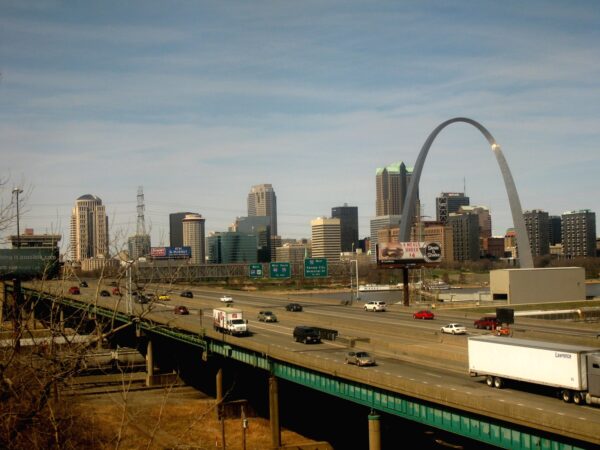
[By David Wilson – Flickr: 20110312 012 St. Louis, MO, CC BY 2.0.]
The first would have been to visit Kathryn and Paul probably in the mid eighties and some of the memories I’ll write about undoubtedly happened on that trip although there could be som event conflation.
My second and third visits were essentially drive throughs. The first of those happened during the Midwest leg of my attempt to see a baseball game in every major league stadium.┬Ā As I recall that trip, I flew to Milwaukee saw a game at the new Comiskey Park in Chicago, then back to Milwaukee for a game the next night at the (now demolished) County Stadium, spent day three at a Cubs game at Wrigley Field, then drove that night to Saint Louis.
I believe the Saint Louis game at another now demolished stadium was on a Saturday night because I recall getting up early the next morning to drive across the state for lunch in Kansas City, Kansas (my only visit to Kansas) and a Sunday afternoon Royals’ game in Kansas City, Missouri. From KC it was a quick trip to the Field of Dreams in Iowa then on to the final game at the (now demolished) Metrodome. The entire trip, including driving to Milwaukee for my flight home took about a week. Thus, the time in Saint Louis was essentially a drive through.
My most recent visit to Saint Louis happened in 2014 on my trip along the Great River Road that I’ve recounted in detail elsewhere on this site. On this trip, I’d chosen to stop in the city so I could again visit with Kathryn and Paul but also to rest a day before continuing my journey south.
Thus, my only meaningful visit to Saint Louis happened more than 30 years ago and it’s possible that what I recount below didn’t all happen on a single trip. That’s why I’m digging deep.
Bowled over in the Gateway to the West.
Undoubtedly, this is the most iconic structure associated with Saint Louis.
[Photo from National Park Service.]
It’s name, the Gateway Arch, is drawn from the city’s moniker as “Gateway to the West”. That nickname arose because Lewis and Clark launched their expedition from Saint Louis. The photo above looks east across the Mississippi River to Illinois and the first photo in this post looks west toward downtown Saint Louis. If you look at the first photo, you’ll see that the Arch sits in the center of a park and that it frames a domed building. This is the Old Courthouse. That space comprises the Jefferson National Expansion Memorial.
While the arch soars to an apex of 630 feet, making it America’s tallest man made national monument, the park conceals an expansive museum below. When I visited the museum, the line for the tram to the top was so long that I opted out because I wanted to experience the city not view it.
(The Arch was designed by Eero Saarinen. The bottom triangles are 54 feet wide and narrow to a width of just 17 feet at the top. It’s designed to withstand an earthquake up to a magnitude of 8.5 on the Richter scale and to sway in high winds – as little as .5 inch in 30 mile per hour winds and as much as 18 inches if windspeeds reach 150 mph.)
On my way to visit the International Bowling Hall of Fame, I stopped at the Old Courthouse which holds at least two important distinctions.
[Photo from NPS.]
It was the first building in the U S with a cast iron dome. Second, it was the site of Dred Scott’s trial in 1847. In this case, Scott and his wife sued for their freedom because they had been held as slaves in a so-called free state. While Scott won all the cases tried in Missouri, the U S Supreme Court overturned the decision in the 1857 case Dred Scott v. Sandford. After the Court’s decision, Sandford freed both Scott and his wife but his freedom was short lived. Scott died in 1858.
My interest in visiting the Bowling Hall of Fame (since relocated to Texas) may seem random since I’ve never mentioned any particular affinity for bowling. The truth is, this was a stop I made for my brother. He loved bowling and its role in his life grew after his multiple sclerosis diagnosis. He joined the Perky Hornets MS bowling team and rarely missed a Monday session until a short time before his death in 2008. I thought he’d enjoy some souvenirs and seeing some photos so when I learned of its location, I made certain to visit.
Brews and Shoes.
In the period before the Saint Louis Browns made their flight to a higher perch and became the Baltimore Orioles in 1954, wags in St Louis mimicking Charles Dryden’s 1904 description of the Washington Senators chanted this descriptor of their hapless hometown squad: “First in booze, first in shoes, and last in the American League.” Although it never actually led the country in either brewing or shoeing, Saint Louis was near the top of both industries for many years in the early twentieth century.
Let’s start with the shoes. Several elements combined to make Saint Louis an attractive place for shoemakers in the late nineteenth and early twentieth centuries. Principally, as the task became more automated it could be easily performed by relatively unskilled labor and with its substantial population of women, immigrants, and even children, Saint Louis lured entrepreneurs such as the Giesecke Meysenberg and the Brown brothers to establish factories there.
[Hamilton-Brown Shoe building – Wikimedia Commons – Public Domain.]
By 1880, Saint Louis supported 23 shoe manufacturers and by 1905 factories in Saint Louis accounted for one of every six pairs of shoes made in the United States lifting it to third place among American cities. When America entered the First World War, three of the city’s largest shoemakers contracted with the military to make more than 50 percent of the shoes and boots for the American Army and Navy.
(There’s no indication that the name of the baseball team had any relationship to either of the Brown shoemaking companies. Rather, it was an attempt to revive memories of the 1880s Saint Louis Brown Stockings that won four consecutive pennants in the defunct American Association.)
While none of my visits to Saint Louis included actively seeking any of the historic shoe factory buildings, I did once tour the Anheuser-Busch brewery. Although John Coons opened the first documented brewery in 1809 on the site now occupied by the Gateway Arch, Saint Louis didn’t start life as one of America’s brewing capitals. However, by 1860 the city had 40 breweries producing more than 200,000 barrels of the sudsy stuff annually. Many failed and by the end of the century the city sported a “mere” 19 breweries.
(Nineteen is still a significant number. In 1935 the country had 700 breweries and by 1950 that number had dwindled to fewer than 400. Then came the age of consolidation and by 1980 the U S had a meager 40 breweries. They were, however, pumping out more than 180 million barrels annually.)
Brewery proliferation began around 1830 with an influx of German and Bohemian immigrants. Many of them brought two main skills – making bricks and brewing beer. One of those immigrants, John Adam Lemp, introduced lager to America. His brew was so successful that he sold his small grocery store, began brewing full time, and died a millionaire.
Then, George Schneider’s sale of his Bavarian Brewing Company in 1860, he planted the seeds of a brewing dynasty.
[Photo from Anheuser-Busch.]
The purchaser, Eberhard Anheuser, renamed it Anheuser & Co. When his son-in-law Augustus Busch joined the firm, it became Anheuser-Busch which introduced a beer called Budweiser in 1876. Busch pioneered using refrigerated railroad cars allowing him to ship his unpasteurized beer greater distances. This transformed “Bud” into America’s most popular beer.
I didn’t see the famous Clydesdale horses which are stabled at Grant’s Farm some miles outside the city.
If you’re interested in further reading about the shoe business, read this paper. It’s a little dry but full of information.
Likewise, if you want to learn more about Saint Louis’ history with beer, you’ll enjoy reading this.┬Ā
Here’s one final fun fact. Many of us in the U S might remember the short lived but popular 1960s television adaptation of Batman starring Adam West. Batman often spent time in the Bat Cave looking at this map of “Gotham City.” Follow the gif closely. It’s Saint Louis!
I promise to keep the next post shorter.
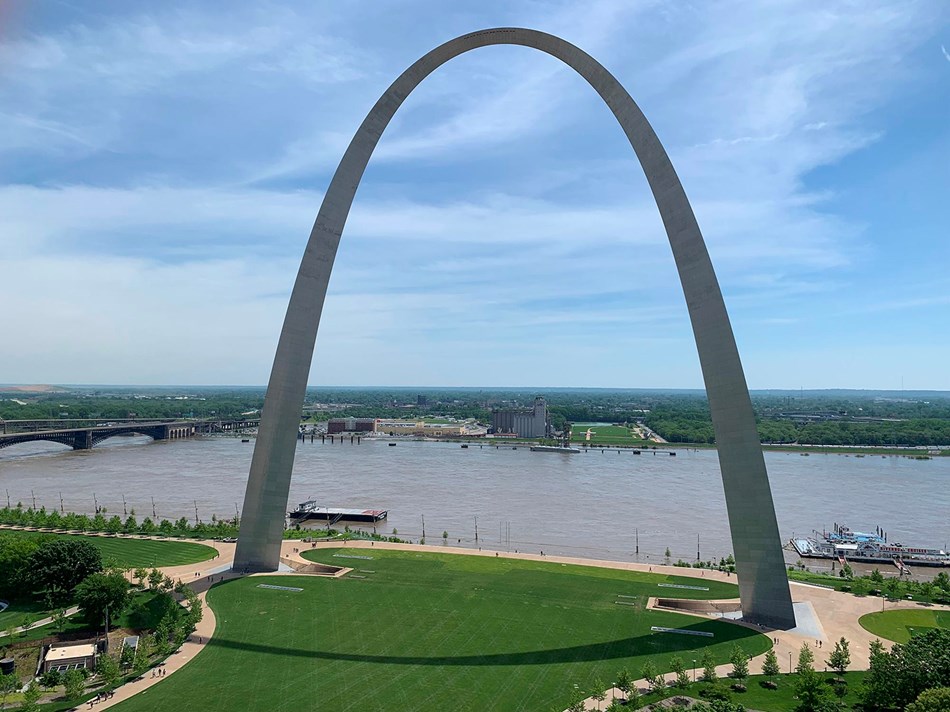
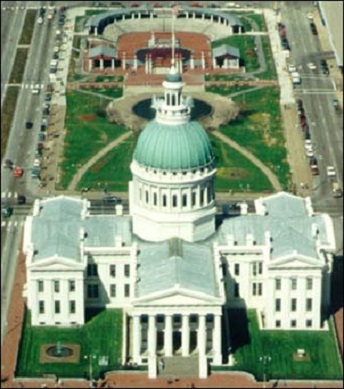
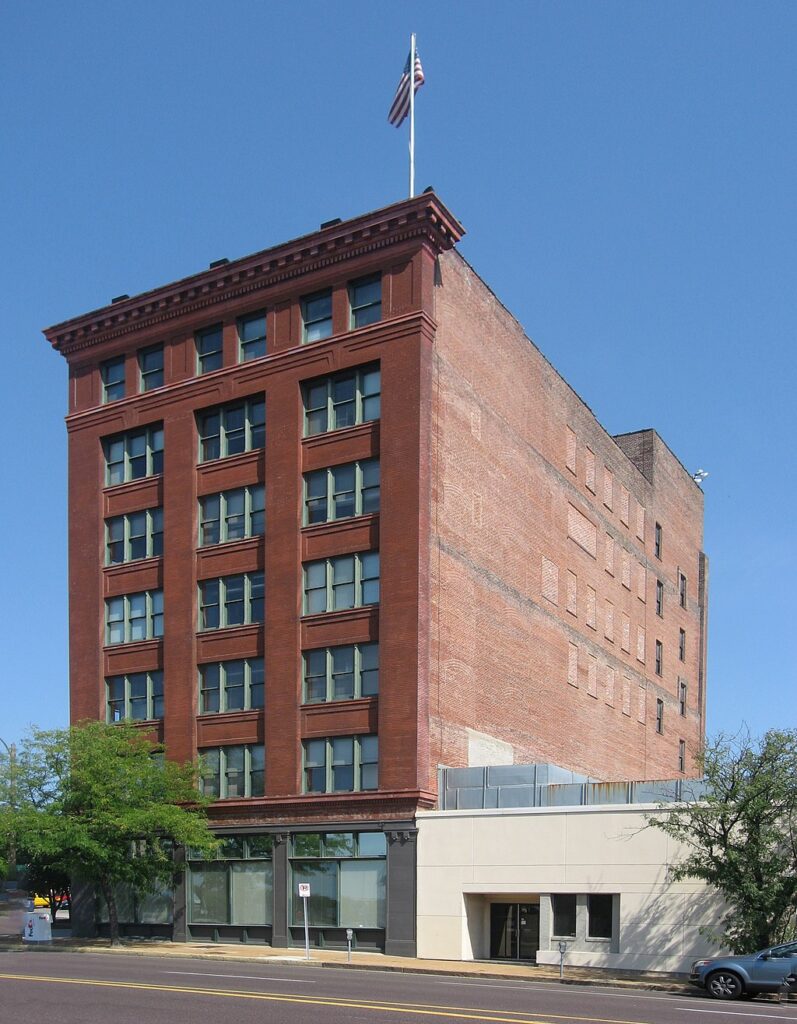
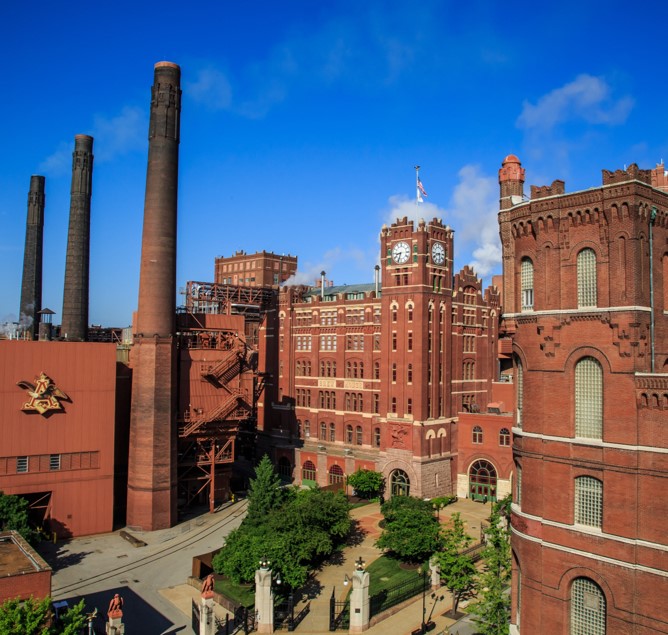

I love the part about shoes. I live in Natick, MA, which has a rich history in shoe manufacturing…
“Natick shoe production in 1855 was reported to be 1,281,295 pairs valued at $1,163,808, with 7,070 men and 497 women employed in the shoe factories. In the latter part of the 19th century, shoe making was the principal business in town and a shoe factory owner was an easily recognized and respected citizen as he made his way through the town wearing his black clothes, his derby hat, yellow kid gloves, and yellow shoes. He grandly drove a horse and two-seater buggy.” https://www.natickhistoricalsociety.org/the-natick-shoe-industry
However, the 800lb gorilla is the beer industry. I’ve enjoyed several documentaries about the “beer wars” that happened in cities like St. Louis and Milwaukee. Heck, I could read another post just on the beer wars if you were so inclined ;-).
Somewhere in my notes I probably have listed the cities that produced more shoes than St. Louis and it wouldn’t surprise me to find Natick among them But I’m not going to dig through the notes to find out – even for you, my friend. ?